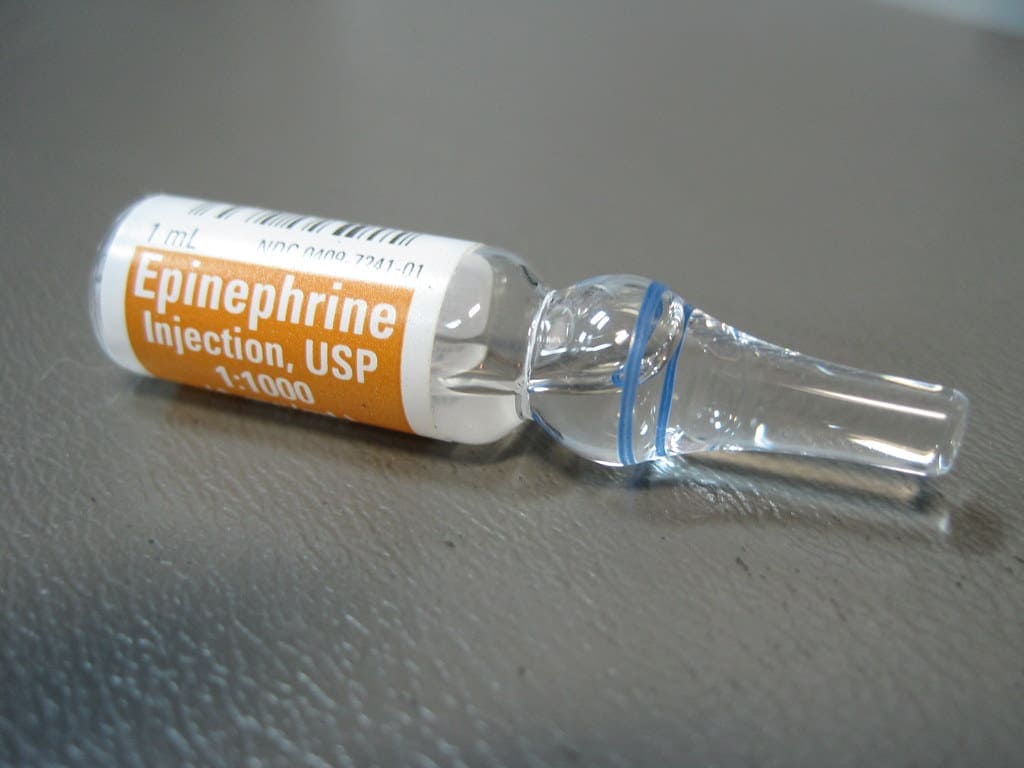Neurotransmitters and hormones play a huge role in the human body. They are referred to as the body’s chemical messengers.
Epinephrine and Norepinephrine are two of the many neurotransmitters in the human body that belong to a class of compounds known as catecholamines. While the two are largely similar, they perform slightly different bodily functions.
Key Takeaways
- Epinephrine acts as a hormone and neurotransmitter, increasing heart rate and blood flow during fight-or-flight responses.
- Norepinephrine functions primarily as a neurotransmitter, regulating attention, alertness, and blood pressure.
- Both substances play crucial roles in the body’s response to stress but have distinct effects and mechanisms of action.
Epinephrine vs Norepinephrine
Epinephrine increases heart rate, blood pressure, and blood sugar levels to prepare the body for a fight-or-flight response. Norepinephrine is a neurotransmitter and hormone released by the adrenal glands and acts as a stress hormone, regulating heart rate, blood pressure, and blood sugar levels.

Epinephrine, more commonly known as adrenaline, is a neurotransmitter in the form of a small molecule produced by the sympathetic nervous system or adrenal glands.
Epinephrine performs significant functions in the body. Epinephrine is provided as additional energy or adrenaline to the body when needed during stress, restlessness, etc.
Norepinephrine, or noradrenaline, is a neurotransmitter in the form of a slightly bigger molecule produced in the inner part of the adrenal glands, also called the adrenal medulla.
Norepinephrine performs significant functions in the body. Norepinephrine helps control stress, increase concentration, and control the sleep-wake cycle.
Comparison Table
| Parameters of Comparison | Epinephrine | Norepinephrine |
|---|---|---|
| Other Names | It is also called adrenaline. | It is also called noradrenaline. |
| Receptors | It works on alpha and beta receptors. | It works on alpha receptors. |
| Production | Sympathetic Nervous System. | Adrenal Medulla. |
| Effects | It prepares muscles for exertion. | It raises blood pressure. |
| Applications | Treatment of Asthma, Anaphylaxis, Anesthesia, etc. | Treatment of Septic shock, mental conditions, etc. |
What is Epinephrine?
Epinephrine, more commonly known as adrenaline, is a neurotransmitter in the form of a small molecule produced by the sympathetic nervous system or adrenal glands.
Epinephrine performs significant functions in the body. It has powerful effects, including increased blood sugar levels, heart rate, contractility, and muscle exertion.
Epinephrine is provided as additional energy or adrenaline to the body when needed during stress, restlessness, etc. This phenomenon is known as the fight-or-flight response, more commonly known as the adrenaline rush.
Epinephrine, in its synthetic form, is primarily used in treating severe allergic reactions such as Anaphylaxis. Such reactions can lead to difficulty breathing or a state of shock.
Epinephrine provides an immediate rush to the body, which causes the heart to pump faster and increases the breathing rate. Not only for allergic reactions but it is also used in treating mucosal congestion and restoring cardiac rhythm, etc.
This neurotransmitter works on both alpha and beta receptors.
Many irregular activities, such as watching horror movies, skydiving, cage diving, etc., cause the heart to beat faster, resulting in the sudden production of epinephrine or adrenaline rush.
This is also followed by many symptoms in the body, such as excessive sweating, heightened senses, dilated pupils, increased strength, etc.

What is Norepinephrine?
Norepinephrine, or noradrenaline, is a neurotransmitter in the form of a slightly bigger molecule produced in the inner part of the adrenal glands, also called the adrenal medulla.
Norepinephrine performs significant functions in the body. Norepinephrine helps control stress, increase concentration, and control the sleep-wake cycle. Just like adrenaline, norepinephrine also belongs to the catecholamine family.
In its synthetic form, Norepinephrine is primarily used in treating septic shock, an acute infection that can lead to organ failure. In this condition, the blood pressure tends to go extremely low.
Norepinephrine injectables immediately constrict blood vessels, thus increasing blood pressure. Deficiency of this neurotransmitter can cause various physical and mental conditions such as anxiety, depression, hypoglycemia, etc.
On the other hand, excessive production of it can also cause various conditions such as obesity and tumour in the adrenal glands.
This neurotransmitter essentially works on the alpha receptors. In a hostile environment, such as stress, depression, anxiety, and sadness, norepinephrine increases as part of the fight or flight response to balance the mind for action.
Heaving a prolonged harmful lifestyle can lead to the overproduction of Norepinephrine, which can further lead to other conditions.
Main Differences Between Epinephrine and Norepinephrine
- Epinephrine is produced in the sympathetic nervous system, whereas Norepinephrine is produced in the adrenal medulla.
- Epinephrine works on alpha and beta receptors, whereas Norepinephrine works on only the alpha receptors.
- Epinephrine causes the relaxation of smooth muscle in the airways to improve breathing. On the other hand, Norepinephrine helps increase blood pressure.
- The imbalance in epinephrine mostly leads to physical conditions whereas the imbalance in norepinephrine mostly leads to mental conditions.
- The effects of epinephrine also cause physical symptoms whereas the effects of norepinephrine are only felt and not physically seen.

- https://www.sciencedirect.com/science/article/pii/S0091674901716259
- https://journals.physiology.org/doi/abs/10.1152/ajpendo.1978.234.3.E252

I especially appreciate the references, it adds a high level of credibility to the article.
This article provides a comprehensive study of neurotransmitters essential in the human body. The detailed comparison between Epinephrine and Norepinephrine is especially useful.
This is an invaluable article about neurotransmitters and hormones. The post has intrigued me to dive into more in-depth research about the topic.
This article is extremely informative and insightful. The comparison between Epinephrine and Norepinephrine provides a clear understanding of their implications.
Fantastic review! The comparison table is very instructive.
The detailed insights about the effects and applications of both neurotransmitters are very well explained.
The article does a great job in explaining the differences between Epinephrine and Norepinephrine. This kind of content is highly valuable
This article is over my head. Not sure what I was thinking when I selected it. By the way, what was I thinking?